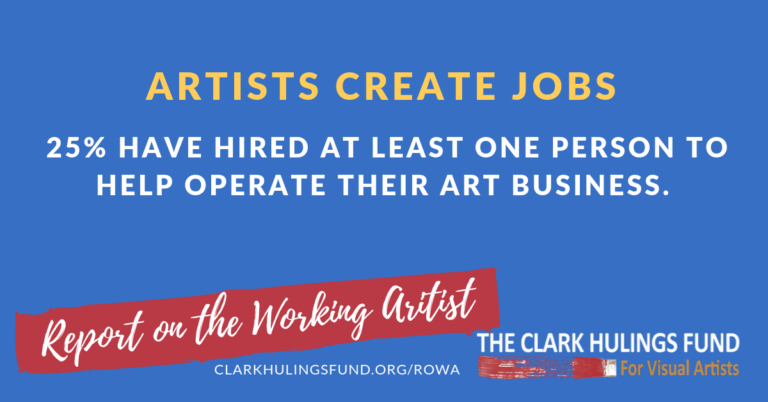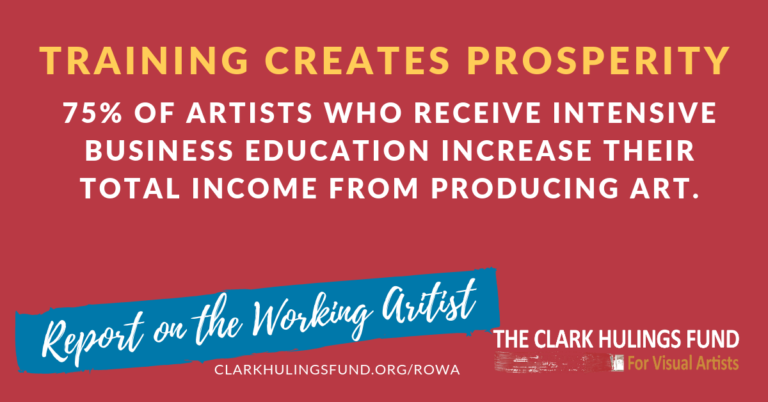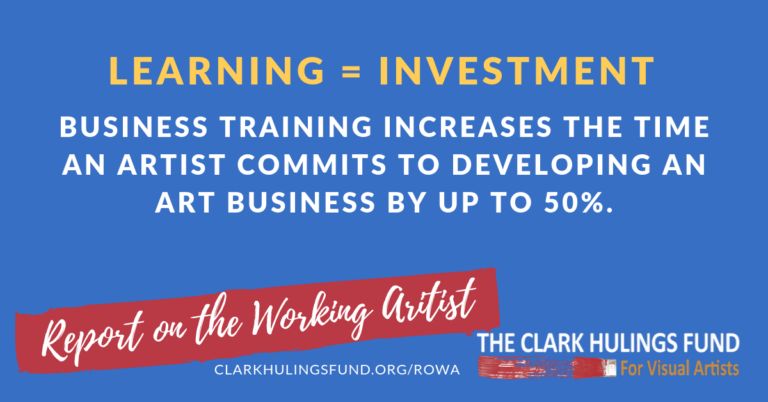Report on the Working Artist
CHF's Report on the Working Artist is a comprehensive assessment of the circumstances, contributions, and needs of professional visual artists in the US, as well as a thorough examination of the ingredients necessary for their success. This report arrives at a pivotal moment in the country’s recognition of the vital role that working artists play within our communities, culture, and economy.
Groundbreaking in both scope and depth, Report on the Working Artist is the product of 30 months of dedicated research and analysis by CHF’s data science team. It represents the first time that anyone has collated and analyzed extant research across arts organizations to examine the conditions facing working artists, and the many impacts these artists have on their communities. With this report, CHF is also the first to publish data on the impact of business education on artists’ careers as demonstrated across various art-business learning programs and multiple cohorts within those programs.
Exciting Findings
Some of the most interesting findings in the report include:
- Artists create jobs: 25% of working artists have hired someone to help them with their artist business
- Artists are savvy investors: 27% of working artists have reinvested over 50% of revenue from their art business back into their enterprise
- Working artists become intensely committed entrepreneurs: Those with training, are willing to commit between 25-50% more of their time to develop their art businesses.
- Behavioral changes: 67% of those working artists who receive concentrated business education take part in more events, obtain more media coverage, increase conversions from their marketing, and sell more art or gain more commissions.
- Bottom line outcomes: A whopping 75% increase their involvement in sales and marketing channels, track their sales more effectively, and (bottom line) increase their total income from making and selling art.












Observations
The economic success of professional visual artists does not have to be the stuff of fantasy, business education for artists really does move the needle. It is an attainable outcome, as long as certain basic steps are taken to overcome the systemic challenges artists face. Artists are entrepreneurs, and—just like entrepreneurs in other fields—they need business education and peer networks to thrive.
As the research shows, business-education programs that meet these professional needs produce prosperity for working artists and their communities. Artists who participate in entrepreneurial learning programs follow a measurable trajectory of change, from internal to external. First, they exhibit changes in attitude, as they build confidence in their ability to manage their art businesses and finances, and increase their clarity around career goals. Next, they change their behavior, increasing the time they spend on their businesses, and networking with peers and other industry leaders. Over time, these shifts lead to demonstrable changes in business results—increased contacts, sales, and commissions—and increased profit/revenue.
The impacts of concentrated business-education programs are not only measurable but also reproducible. When art-business education is offered in multiple formats, it can be scaled up to reach ever-greater numbers of artists, replicating their success across the country. In short, the stereotype of the starving artist is not destiny; there is a far better alternative, and it is completely within reach.
The Report on the Working Artist demonstrates the catalyzing role artists play. When the prosperity of individual visual artists and groups of artists is boosted, the economic and cultural impacts of their success are felt near and far.
Press inquiries: press@clarkhulingsfoundation.org


